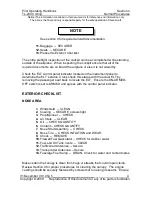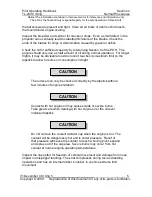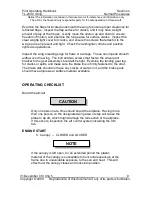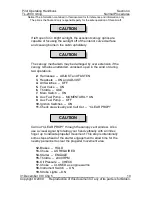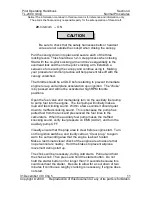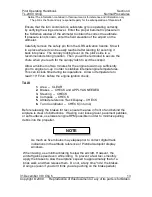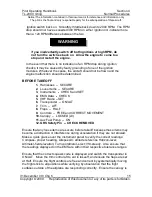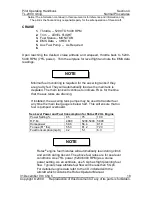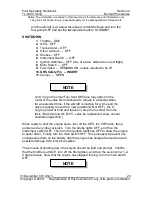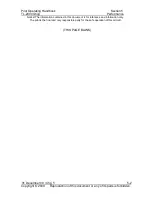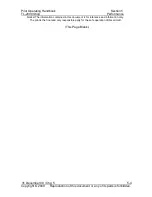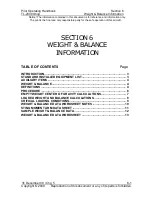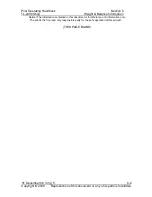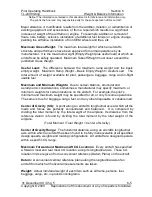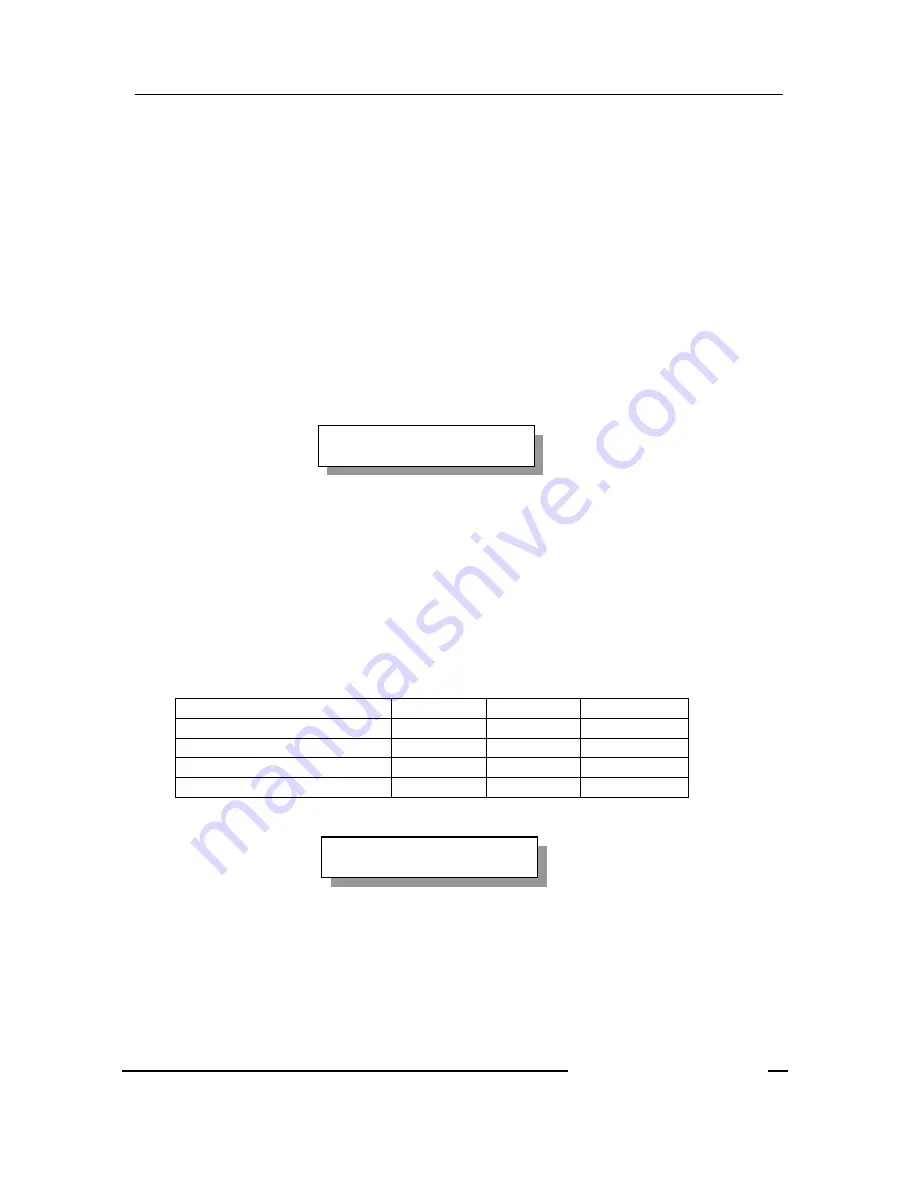
Pilot Operating Handbook
Section 4
TL-2000
Sting
Normal Procedures
Notice! The information contained in this document is for reference and information only.
The pilot is the final and only responsible party for the safe operation of this aircraft.
31 December 09 / Chg 5_____________________________________________18
Copyright © 2009 Reproduction of this document or any of its parts is forbidden.
CRUISE
1.
Throttle -- 5200 TO 5400 RPM
2.
Trim -- LEVEL FLIGHT
3.
Fuel Status -- MONITOR
4.
EMS Data -- CHECK
5.
Aux Fuel Pump -- As Required
6.
Upon reaching the desired cruise altitude and airspeed, throttle back to 5200-
5400 RPM, (75% power). Trim the airplane for level flight and note the EMS data
readings.
Minimal fuel monitoring is required for the aux wing tanks if they
are gravity fed. They will automatically feed as the main tank is
depleted. The main tank will continue to indicate FULL for the time
that the aux tanks are draining.
If installed, the aux wing tank pumps may be used to transfer fuel
any time the main fuel gauge is below half. This will ensure that no
fuel is pumped overboard.
Sea Level Power and Fuel Consumption for Rotax 912 UL Engine
Power Setting %
65
75
100
R.P.M.
4800
5200-5400 5800
Horsepower
50.6
58.4
81.0
Torque (Ft * lbs)
55.3
61.2
72.3
Fuel Consumption (GpH)
4.2
5.1
6.3
Rotax
®
engine fuel mixtures will automatically lean during climb
and enrich during decent. The above fuel rates are for sea level
conditions. Use 75% power (5200-5400 RPM) as a cruise
power setting. As an estimate, use 5 Gph as flight planning fuel
flow. Typical cruise altitude fuel flow will be less than 5 Gph.
For detailed engine data refer to the CD included with the
aircraft which contains the Rotax Operator Manual.
NOTE
NOTE

